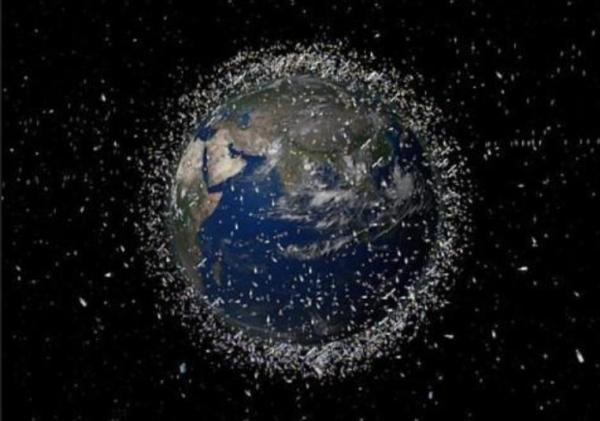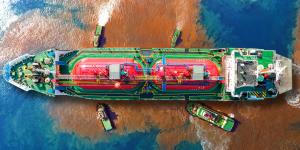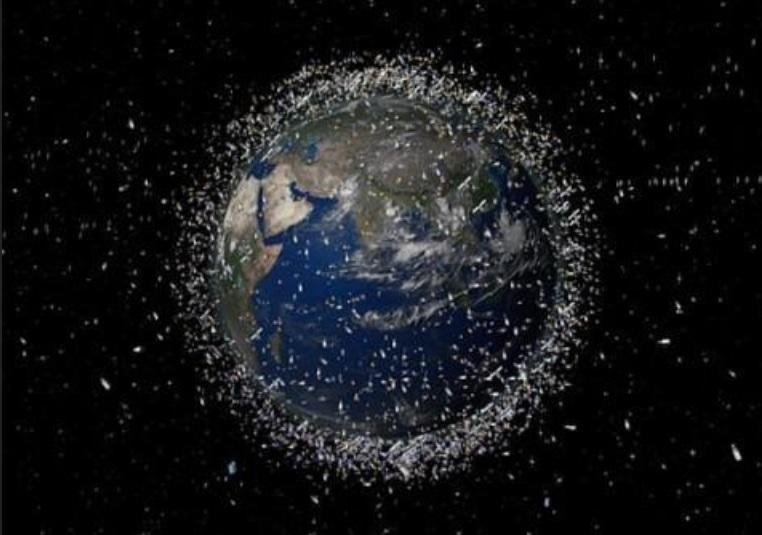What Is Space Junk or Debris?


The human propensity for waste generation has expanded beyond the boundaries of Earth. The growing volume of debris encircling our planet presents a tangible peril to telecommunications, space missions, and the spatial realm itself. Once part of our exploration and communication endeavors, this collection of discarded fragments now requires our attention and concerted effort to address its implications.
The following article by thedailyECO explains what space junk or debris is as well as strategies for its mitigation, emphasizing the imperative need to initiate a reduction in its proliferation.
What is space junk or space debris?
Space junk, also known as space debris, refers to the collection of defunct, non-functional, and discarded man-made objects that are orbiting the Earth. These objects can include old satellites, spent rocket stages, fragments from spacecraft, discarded equipment, and other remnants from various space missions.
As these objects orbit the Earth at high speeds, they can pose a collision hazard to active satellites and other valuable equipment in space. Collisions between space debris and operational satellites could lead to further generation of debris in a cascading effect, exacerbating the issue.
Interestingly, experts emphasize that the smaller pieces are actually the most dangerous. Despite their size, they're hard to track because they move so fast. When they hit other equipment, they can cause as much damage as high-speed bullets.
Debris or satellites abandoned at altitudes exceeding 36,000 kilometers have the potential to perpetually orbit the Earth for hundreds, if not thousands, of years.
How much space junk is there?
Currently, approximately 2,000 operational satellites are encircling our planet. However, the situation becomes more intricate when considering the existence of another 3,000 non-functioning satellites that continue to clutter the cosmic expanse.
What's even more concerning is the sheer abundance of space debris measuring over 10 centimeters in diameter, amounting to approximately 34,000 fragments. These sizable remnants could potentially lead to severe collisions and increased hazards for space activities.
Why is space junk a major problem?
Space junk poses a significant and escalating problem with multifaceted consequences for space activities and Earth's safety.
For starters, this debris populates Earth's orbit, creating a potential collision hazard for operational satellites, spacecraft, and even the International Space Station (ISS).
While a substantial portion of this debris burns up upon reentry into Earth's atmosphere, larger fragments pose more pressing concerns. These sizable remnants risk reaching the Earth's surface, endangering commercial flights and posing potential threats to populated areas.
Compounding the issue is the alarming growth rate of this space pollution. The sheer volume of debris has reached a point where it could render certain orbital paths impassable.
An expanding collection of space junk has the propensity to trigger a dangerous feedback loop: collisions between objects generate further fragments, contributing to a self-perpetuating cycle of debris generation. This phenomenon, referred to as the Kessler syndrome and postulated by NASA consultant Donald J. Kessler, underscores the potential for this issue to spiral out of control.
The implications are manifold. Operational satellites, which are essential for communication, navigation, weather prediction, and scientific research, face increased risks of damage or inoperability.
Additionally, the execution of space missions, from launch to orbit to reentry, becomes progressively challenging due to the congested orbital environment. The financial burden of monitoring, predicting collisions, and devising methods for debris removal further amplifies the gravity of this challenge.
You might find interest in another article, where we delve into the reasons behind the presence of craters on the surface of the Moon.
How do we solve the problem of space junk?
Solving the problem of space junk requires a multifaceted approach involving international collaboration, technological innovation, regulatory measures, and responsible space practices. Here are some strategies to address the issue of space debris:
1. Debris tracking and monitoring:
- Enhance tracking systems to monitor the precise location and trajectory of space debris.
- Establish a comprehensive database of known debris objects to aid in collision avoidance.
2. Debris removal
- Develop and deploy technologies to actively remove large and potentially hazardous debris from orbit.
- Explore concepts such as space-based robotic systems or nets to capture and deorbit debris.
3. Deorbiting measures
- Design spacecraft and satellites with built-in propulsion systems to enable controlled deorbiting at the end of their operational life.
- Enforce regulations requiring operators to remove satellites from orbit within a specified timeframe.
4. Responsible launch practices
- Encourage responsible launch practices that minimize the creation of new debris during launches and deployments.
- Implement measures to reduce the risk of accidental collisions during satellite launches.
5. International collaboration
- Establish international agreements and guidelines for space debris mitigation and removal.
- Foster collaboration among space agencies, governments, and private companies to address the issue collectively.
6. Incentives for debris removal
- Offer financial incentives, regulatory advantages, or other benefits to those who participate in debris removal efforts.
7. Space traffic management
- Develop effective space traffic management systems to coordinate the movement of satellites and spacecraft and reduce the risk of collisions.
8. Education and awareness
- Educate the public, policymakers, and industry stakeholders about the risks and consequences of space debris.
- Raise awareness about responsible space practices and the importance of debris mitigation.
9. Technological innovation
- Invest in research and development of innovative technologies for debris tracking, removal, and prevention.
- Explore new materials and designs that reduce the creation of debris in the event of collisions.
10. Regulatory framework
- Establish and enforce international regulations that mandate responsible space operations, including debris mitigation and removal.
11. Clean space designs
Design satellites and spacecraft with features that minimize the generation of debris, such as retractable appendages and safer propulsion systems.
Make sure to read this additional article where we've compiled a list of various types of environmental impacts.

If you want to read similar articles to What Is Space Junk or Debris?, we recommend you visit our Pollution category.






